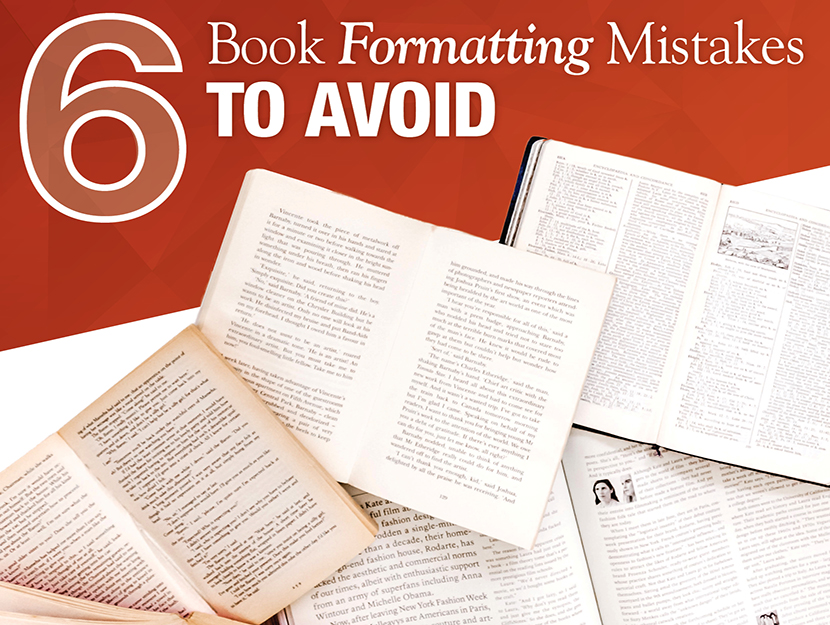You’re ready for self-publishing.
You’ve put the finishing touches on your manuscript, and you can’t wait to see your idea become a reality.
You’re excited and nervous. Maybe you’re even a little scared.
The publishing process can be overwhelming, and your book has to be the best it can be.
Nothing else will suffice.
But what comes after “The End”?
As an author, you’re probably aware that it’s not the end at all. It’s another beginning.
It’s time to take your writer hat off and put on your business hat. It’s time to turn your book into a product that sells. It’s where the hard work of cover design, copywriting, layout, typography, editing, formatting, and more begin.
With over a million self-published books hitting the market every year, it’s critical that your book stands out both on the inside and the outside, in print and eBook.
Sure, it’s not as thrilling as writing, but it’s necessary to get your book to where it needs to be: in front of your readers. Failing to consider the reader experience on any of these factors (and more) can result in lost sales and disappointing book launches.
So, how can you make your book stand out from all the rest?
Begin by avoiding these common self-publishing mistakes that can prevent you from getting where you want to be, and from earning money from your book sales.
Mistake #1 - Professional vs. Do-It-Yourself Design


*Book cover images courtesy of author Vlad Vaslyn.
Which one of these covers is more effective?
Most people will say the cover on the right is superior. The original cover on the left, while a neat image, doesn’t exactly stop readers in their tracks. It was produced and designed on a shoestring budget by a local artist at the author’s direction. Unfortunately, it screams, “self-published!”
By comparison, the cover on the right was designed by a professional graphic designer. The design, typography, and layout are appropriate for the genre and the product.
The importance and quality of a professionally designed book cover can’t be overstated. With all the necessary tools widely available to authors these days, there should be no discernable distinction between a self-published book and a traditionally published book. If there is, you’re doing it wrong.
You’re an author, but once you set foot on the path to publishing, you become a business person, which means you need to produce a quality product that sells.
After all, how many shoddy-looking products do you buy?
Invest in professional book design.
Mistake #2 – Content Misalignment
The original cover design also failed to represent the subject matter of the book. The road-into-the-tree concept was too abstract, and while it is a significant plot point in the novel, there’s no way the reader could know that without reading the book. The design renders the cover irrelevant. The updated cover on the right immediately conveys a sense of brooding darkness and the specter of death, which is appropriate to the content within since it is a horror novel.
Your book cover isn’t only a chance to make an excellent first impression, just as importantly, it’s a promise to your reader.
What might they find within the pages of your book? Do you want to seduce them into a steamy romance novel, or help them become a better person with a self-help book? Bring them into the intrigues of an international spy thriller, or teach them about local history?
The comic book feel of the original cover didn’t reflect the gritty horror within, while the updated cover is far more effective. The concept of your cover and the subject matter of your book must be aligned. It must reflect the experience you’re delivering.
Mistake #3 – Bad Thumbnails
Are you going to have two book covers designed, one for print and one for online viewing, or do you want one cover to serve both purposes? The answer to this question is extremely important, and most authors would prefer to have one versatile cover that serves both formats.
Most books are bought online these days, and even shoppers who prefer the in-store experience still vet many of their reading choices online at some point in the buying process. They read reviews and short book descriptions, and when they do, they’re not looking at your beautiful, full-size cover image unless they click into it. They’re looking at tiny thumbnail images among many other thumbnail images.

*Actual thumbnail size on Amazon when viewed on a desktop device.
It’s the online equivalent of shopping in a physical bookstore: book design influences the titles you choose to examine. Your book cover has to be quickly and easily absorbed by readers casually scanning titles among many other titles.
Consider shopping for books on Amazon, for example. The default desktop screen shows rows of books nine across and three rows deep. That’s twenty-seven books to scan without even clicking any deeper into the website. Those that are hard to read, or too busy, or don’t have an attractive design get overlooked and ignored.
It’s not enough for a book cover design to be considered for print formats any longer. They must also be considered for e-publishing.
At the least, it must:
- Convey the concept of the book
- Have a title that’s easy to read in small and large formats
- Have an attractive design in small and large formats
Avoiding these mistakes—DIY book covers, content misalignment, and bad thumbnails—will set you on your way to bringing your manuscript to finished product.
Hiring a professional designer with a deep portfolio and a good reputation can help bring your book to the next level by avoiding these self-publishing mistakes. It can help ensure that all the effort you’ve put into your book gets the results you need where it counts: at the cash register.
It may not be easy, but it will be worth it.

